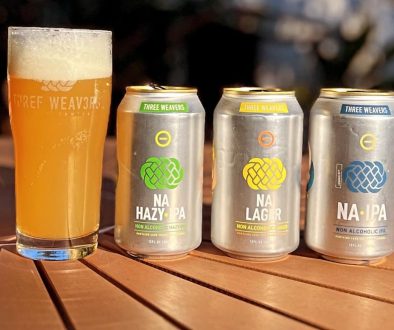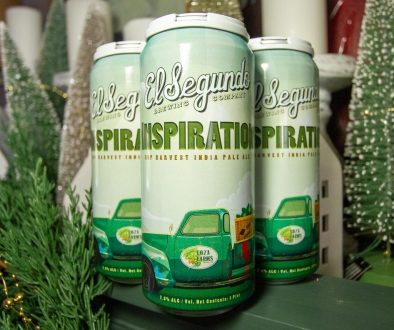Pour Me A Glass Of Beer…Or a Mug, or a Schooner, or a Tulip
There has been a long-running discussion about how – or whether – the glass affects the experience of drinking a beer: the aroma, the temperature, the flavor, the whole aesthetic. Some are solid supporters of the “different glass makes a difference” school, while some are more skeptical.
Allow me to make an analogy in an attempt to bring some clarity to the situation. My wife likes wine – as do I, but she embraces it more – so we own a selection of wine glasses. She has four different types of the stemless Riedel O glasses, her favorite, and keeps them carefully washed, hand-dried, and stored in easy reach for different occasions. We always use the Sauvignon Blanc glasses for our New Zealand blancs; the Shiraz glass (not the Old World Syrah glass!) for the Aussie reds she favors, and so on. She loves the feel of the glass in her hand and on her lips, how it enhances the aromas, and places the wine directly on the right spot of her tongue.
For me, the best things about the Riedel glasses are that she likes them, and they’re fragile and replaceable. Therefore, I know there’s always something I can buy her for Christmas.
Look, I’m no Philistine, but honestly? How much do you want from your beer glass? I want a glass that’s easy to clean, not prone to breaking or chipping, not stupidly expensive, comfortable in the hand, and attractive, though I’ll admit that the last two are necessarily subjective. The Riedel wine glasses are comfortable and attractive, but they’re also more than $15 each, and prone to breakage while they’re being cleaned. I have the same complaints with the Riedel beer glasses, and I’d add that they don’t stack worth a damn, which oughta count for something.
I remember being so excited and giddy when I learned about all the different glassware beers got in Belgium. ‘Every beer has its own glass!’ the books and beer tourists said, and there were pictures of all the different glasses behind the bar. Wow, look at that! Every glass is different, it must be because it matters!
And then you grow up a little and realize that every brand of beer has its own glass, because it’s all about marketing, and badging, and advertising in the wonderful beer world of Belgium, where you thought everything was so pure and beer-like and, well, monks. And it is, kind of. A little. But it’s mostly about selling beer, because when you see that glass, you know the guy’s drinking that beer, and you think, hey, I oughta drink that beer too; look at that cool glass!
Unbranded glasses – tulips, thistles, IPA glasses – are more about selling glasses, because we’ve reached the point where we’re sophisticated enough that we too can be convinced the glass makes a difference, especially when it’s expensive. But let’s think about what we’re being sold.
We’re told that some beers need a glass that opens up to release their more delicate aromas. But we’re told that other beers need a glass that tapers inward at the top to collect those aromas. We’re told that a delicate glass puts less between you and the beer, that it’s more aesthetic. But we’re told that a hefty, solid glass feels chunky and true in the hand and keeps the beer cold longer. We’re told that a beer has to be in glass to show off its true color and beauty. But…but…okay, we’re not specifically told anything about stoneware mugs, but I love ’em, and I already know what color my beer is, so there!
How do you test the theory that these glasses make the beer taste better and know that you’re not being influenced by the test? They could, I supposed give you the different glasses with different colors, and tell you it’s a color test, then reveal that it’s actually shapes, but surprise! No glass manufacturer wants to do it blinded. There’s a built-in bias to this, and I’ll admit to a built-in skepticism that would make me a bad subject as well.
Bottom line? Beer glasses are a 1% issue, in that there must be a lot of things done right before you get to the point where the glass selection matters enough to enter into the decision-making process. If we’ve gotten past worrying about frosted glasses, and dirty glasses, and chipped glasses, and a dearth of variety of beers to put in them, and moved on to getting pissy about which glass we’re enjoying our beer from…that’s great!
For me, though, if the glass is clean, safe, and big enough to satisfy, I’ll drink a beer from it, and move on to something important. Like whether to get the sour IPA…or the hoppy sour. Decisions, decisions…
Lew Bryson has been thinking about beer and whiskey for over 20 years. Follow Lew: @LewBryson on Twitter and Instagram, Lew Bryson on Facebook. His book “Tasting Whiskey” makes a great gift, too!





12 Types of Beer Glasses (and the Perfect Brew for Each) - Lead Right News
October 31, 2022 @ 8:03 am
[…] hand, beer writer Lew Bryson thinks the idea that you need a specific glass for every kind of beer is mostly marketing. And world-renowned beer writer Stephen Beaumont thinks you can get away with just a few different […]
December 22, 2016 @ 8:46 pm
I’ve tried various beers with the suggested type of glass and I must say… A Ball or Mason jar with a lid seems to be the best for any low hop or high malt flavor. The enclosed space seems to amplify the amazing aroma of a malty beer. It isn’t fancy, but the result is top notch.
November 29, 2016 @ 2:42 pm
I’d be hard-pressed to find examples where changes in beer glasses really affect the taste of the beer in them, and have come to the conclusion that I choose my glassware depending on what glass I want to be holding. That said, my experience with wine has been quite different. I have two fancy Riedel glasses that are designed for Bordeaux… and not only are cabernet-based and merlot-based wines generally much better from those glasses than from a generic wine glass, but often other types of red wines (sangiovese-based wines, say) are much _worse_ in these glasses than in generic wine glasses. I don’t get it, but the results are consistent for me.